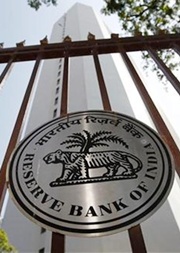Revised financial sector code aims to clip RBI’s wings
24 Jul 2015
In what looks like the government's move to usurp financial powers vested in the financial sector regulator, Reserve Bank of India (RBI), the finance ministry on Thursday released a revised draft Indian Financial Code (IFC), which proposes to do away with the RBI chief's authority to veto the interest rate decision of the Central bank's monetary policy committee.
 The IFC, which is conceived as an overarching legislation for the financial sector, proposes a monetary policy committee which will be entrusted with the task of deciding the key policy rate and chasing the annual retail inflation target to be decided by the government in consultation with the RBI.
The IFC, which is conceived as an overarching legislation for the financial sector, proposes a monetary policy committee which will be entrusted with the task of deciding the key policy rate and chasing the annual retail inflation target to be decided by the government in consultation with the RBI.
As per the revised financial code, the Monetary Policy Committee will be the final authority to decide on monetary policy and the Reserve Bank governor will have no veto power. He will only enjoy a second casting vote.
The draft IFC proposes that the all-powerful committee would have four representatives of the government and only three from the central bank, including the 'RBI chairperson'. The draft talks of 'RBI chairperson' and not 'RBI Governor'.
The first draft, submitted in March 2013, too had talked about the committee and majority vote, but gave powers to the RBI chairperson to supersede the decision of the panel.
"Inflation target for each financial year will be determined in terms of the consumer price index by the central government in consultation with the Reserve Bank every three years," said the draft, on which the ministry has invited comments till 8 August.
Further, the RBI "must constitute a monetary policy committee to determine by majority vote on the policy rate required to achieve the inflation target". As per revised draft, there will be three members from the RBI side and four from the central government thus giving full control to the government on policy rate.
The government and the RBI had always disagreed over size of the committee, its composition and whether the governor would have the final say in the form of a veto.
RBI members of the MPC would be RBI chairperson, one executive member of the Reserve Bank Board nominated by the central bank and one employee of the central bank nominated by the chairperson of the RBI.
"In the event of a tie amongst the members of the Monetary Policy Committee, the Reserve Bank Chairperson will have a second and casting vote," the draft reads. "The decisions of the Monetary Policy Committee will be binding on the Reserve Bank," it added.
Till now, a technical advisory committee (TAC) used to advise the RBI governor on the state of the economy and the course of action the Central Bank should take. However, the final decision always was with the governor.
The finance ministry seems to have taken note of RBI governor Raghuram Rajan deciding to ignore the advice of the TAC during the first bi-monthly monetary policy this year and letting interest rates remain unchanged.
Despite the majority supporting a cut in rates, Rajan exercised his power and maintained status-quo.
The government has also long been asking the RBI to cut rates and help the economy revive.
Once the IFC becomes a law in its current form, it will snatch away this veto power from the RBI governor. The revised IFC has no provision of a veto by the RBI governor and instead decision will be taken by majority vote.
RBI also will not remain an independent agency, which monitors the economy and sets its policy but will become an extension of the government.
The centre, with its power to appoint four members on the seven-member Monetary Policy Committee (MPC), will effectively control the interest rates policy.
The revised draft of the Indian Financial Code (IFC) clearly states that the government intends to create a non-sectoral, principle-based legislative architecture for the financial sector, by restructuring existing regulatory agencies and creating new agencies, wherever needed for better governance and accountability.
This clearly states that the government will not allow the Reserve Bank of India (RBI) to have any control on the economy.
The modifications to the IFC mainly relate to:
- Strengthening the regulatory accountability of financial agencies;
- Removing the provision empowering FSAT to review regulations;
- Rulemaking and operational aspects of capital controls;
- Monetary policy framework and composition of the Monetary Policy Committee (MPC);
- Regulation of systematically important payment system and others;
- Removing the provision of special guidance etc.
Further the modifications have taken into consideration the enactments subsequent to the submission of the FSLRC report, namely The Pension Fund Regulatory and Development Authority Act, 2013 (PFRDA Act) and Securities Laws (Amendment) Act, 2014. However, the modifications in the revised Draft IFC remain consistent with the overall structure and philosophy of the FSLRC report.






















